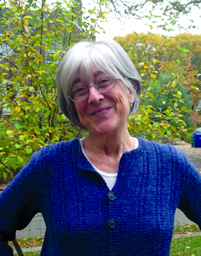Rheumatologists are often called upon to manage patients with challenging conditions for which clinical evidence is not definitive and sometimes not even extant. Curbside Consults: Ask the Professors will offer the latest evidence and considerations for three troublesome diseases today from 2:30 – 4:00 pm.
Enthesitis and dactylitis are not necessarily rare diseases, but are seldom recognized on the initial exam, or even the second or third exams. Enthesitis affects the point of attachment between bone and tendon. It occurs near joints but is not a disease in the joints. Dactylitis, or sausage digit, is inflammation of the entire digit, whether it be a finger or toe, and can be very painful.

“Rheumatologists are very good at detecting joint inflammation,” said M. Elaine Husni, MD, MPH, Professor and Vice Chair of Rheumatology and Director of the Arthritis and Musculoskeletal Center at the Cleveland Clinic Foundation. “That is what we do all day long. But enthesitis symptoms are located outside the joint and that can be more difficult to localize and recognize. We don’t have any blood tests to tell us this enthesitis, no fluid to draw like we do with joint synovitis, no standard imaging modalities. Yet enthesitis is very common in patients with spondyloarthropathy and psoriatic arthritis.”
There are also two types of enthesitis: Mechanical and inflammatory. The mechanical form comes from stress and injury such as Achilles tendonitis in basketball players or epicondylitis in tennis players. Fibromyalgia can also produce pain around joints, which further complicates diagnosis.
“The differential can be quite wide and not so easy to detect as rheumatoid arthritis, where the joint swelling can be more obvious,” Dr. Hosni said. “This session will help rheumatologists better distinguish the sources of pain, which is important because treatment is so very different for fibromyalgia, RA, mechanical injury, and inflammatory enthesitis and dactylitis.”
Calcinosis associated with dermatomyositis and systemic sclerosis can cause even more challenges. There are no approved treatments or randomized clinical trials. Until recently, no outcome measures to assess the burden of disease or the effects of treatments existed.

“Our group, in collaboration with the Scleroderma Clinical Trials Consortium (SCTC), recently published a new radiographic scoring system for calcinosis of the hands in patients with systemic sclerosis,” said Lorinda Chung, MD, MS, Associate Professor of Medicine and Dermatology, Division of Immunology and Rheumatology at the Stanford School of Medicine. “Another collaborator has developed a novel patient questionnaire that we are going to be validating for use in clinical trials to assess outcomes. Both the radiographic scoring system and the patient questionnaire will be useful in testing the efficacy of drugs as well as in assessing the natural history of calcinosis.”
There are also glimmers of hope for treatment. Recent studies have shown an association between ischemia and the onset of calcinosis in both systemic sclerosis and dermatomyositis. Dr. Chung and her collaborators from the SCTC have also uncovered an association between calcinosis and osteoporosis, suggesting that bone remodeling may play a role.
“We have drugs available targeting both ischemia and bone remodeling that could be potentially useful and should be evaluated in clinical trials for calcinosis,” she said. “Now that we have outcome measures to assess whether there is any effect from these agents on the calcinosis burden, the time is ripe for clinical trials.”
Paget’s disease, a metabolic disease that can have dramatic effects on an aging skeleton, is another difficult diagnosis. It is not difficult to spot on plain films, but is often missed when cortical thickening or bone remodeling is subtle.

“Clinicians miss Paget’s very often because they so seldom look at their own x-rays,” said Margaret Seton, MD, Assistant Professor of Medicine at Harvard Medical School and Director of Metabolic Bone Diseases at Brigham & Women’s Hospital. “They expect Paget’s to manifest with a high serum alkaline phosphatase, which it often doesn’t, and they expect it to metastasize to new bones, which it doesn’t. I’ve cared for patients whose x-rays said ‘new site of Paget’s’ when it was a prostate cancer.”
Like osteoporosis, Paget’s weakens bone and increases the risk of bone fractures. The older the patient, the more fragile the bone and the greater the risk for fracture.
“Once someone has a fracture, it sets them back at a time when the circumstances of life tend to be more precarious,” Dr. Seton said. “The patient may have financial difficulties, their partner may have died, they may have no one who can help them rehab. There is no one in medicine like a rheumatologist for keeping patients healthier, living at home, and mobilized. Paget’s is a wonderful window into understanding the links between joint function and bone.”
